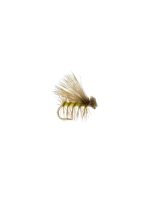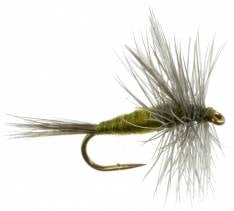Unravel the beauty of Arkansas’s prime fly fishing location, the White River. This comprehensive guide offers an in-depth look into the art of fly fishing on this crystal clear river. From understanding the fishery to finding the best fishing spots, picking the perfect fly fishing gear, and honing your techniques, we’ve got you covered. So, let’s dive into this treasure trove of fly fishing wisdom. Remember, there’s always a bigger fish out there waiting for your cast!
The White River and its Fishery: A Biography
The White River runs for 722 miles, providing some of the finest fly fishing waters in the country. The fishery is primarily known for its large Rainbow and Brown Trout populations. The best times to fish here are the spring and fall seasons, offering the most active fish and the most pleasant weather. The river stays cold all year round due to the dam releases, which makes for an ideal trout habitat.
Top 5 Access Points on the White River
| Location | Directions | Local Guide Shop |
|---|---|---|
| Rim Shoals | Off Highway 62-412, east of Cotter | Rim Shoals Fly Shop |
| Wildcat Shoals | East of Cotter on County Road 704 | Dally’s Ozark Fly Fisher |
| Bull Shoals State Park | Off Highway 178 in Bull Shoals | Blue Ribbon Fly Shop |
| Sylamore Creek | Near Mountain View off Highway 5-9-14 | Sylamore Creek Fly Shop |
| White Hole | South of Flippin on Promise Land Road | White Hole Fly Shop |
The Best Low Traffic Fishing Spot: Wildcat Shoals
The area around Wildcat Shoals tends to be less crowded than other parts of the river, making it a hidden gem for anglers looking for a peaceful fishing experience.
The Busiest Fishing Spot: Bull Shoals State Park
Bull Shoals State Park is known for being one of the most active spots, filled with both beginner and experienced anglers.
Ideal Rod and Reel Selection
A 9-10 foot, 5-6 weight rod with a matching reel is a versatile option for most conditions on the White River. This setup provides a balance between casting ability, line control, and fighting power for those hefty browns and rainbows.
Fly Selection by Season
| Season | Fly Name | Favorite Color | Hook Size |
|---|---|---|---|
| Winter | Zebra Midge | Black/Red | #18-22 |
| Winter | Pheasant Tail Nymph | Natural | #16-20 |
| Winter | Griffith’s Gnat | Black | #18-22 |
| Spring | Elk Hair Caddis | Tan | #14-18 |
| Spring | Hare’s Ear Nymph | Natural | #14-18 |
| Spring | March Brown Dry Fly | Brown | #12-14 |
| Summer | Foam Hopper | Green/Yellow | #10-12 |
| Summer | Copper John | Copper | #14-18 |
| Summer | Light Cahill Dry Fly | Light Tan | #12-14 |
| Fall | Woolly Bugger | Olive/Black | #6-10 |
| Fall | Egg Pattern | Orange/Pink | #10-12 |
| Fall | Parachute Adams | Gray | #14-18 |
Three Techniques for Fishing the White River
Dead Drifting: This technique is ideal for nymph and dry fly fishing. Cast upstream and let your fly drift naturally with the current.
Swinging Flies: Cast your fly downstream and let it swing through the current. This is effective when fishing with wet flies and streamers.
High Sticking: When nymphing in fast water, keep your rod high to maintain better control over the drift and detect strikes more easily.
Rigging Your Rod
Start by choosing a fly line to match your rod’s weight. Attach a 9-12 foot leader tapering down to a 4X or 5X tippet. If you’re nymphing, set your indicator about 1.5-2 times the water’s depth above your fly and adjust as needed.
Local Laws and Restrictions
Ensure you have an Arkansas fishing license and trout permit before fishing. There’s a slot limit on brown trout from 12 to 24 inches, and only one over 24 inches can be kept per day. There are no bait restrictions, but barbless hooks are encouraged for catch and release.
Conclusion
Unlock the angler’s paradise by mastering how to fly fish the White River. From identifying the perfect fishing spots to honing your techniques and rigging your rod, this river offers a unique fishing experience. So grab your gear, cast your line, and embrace the thrilling adventure of fly fishing on the White River.


